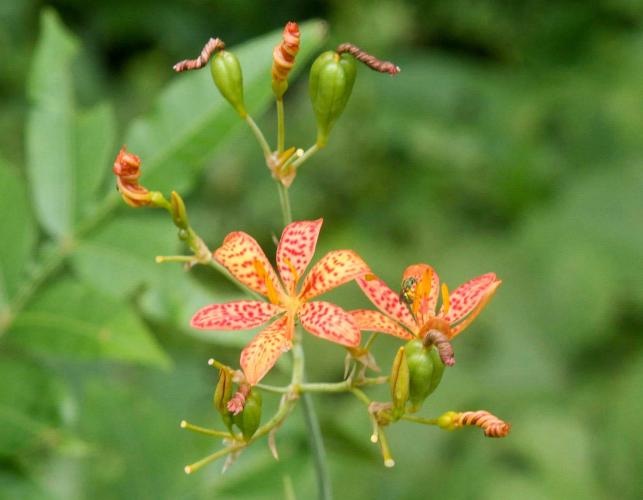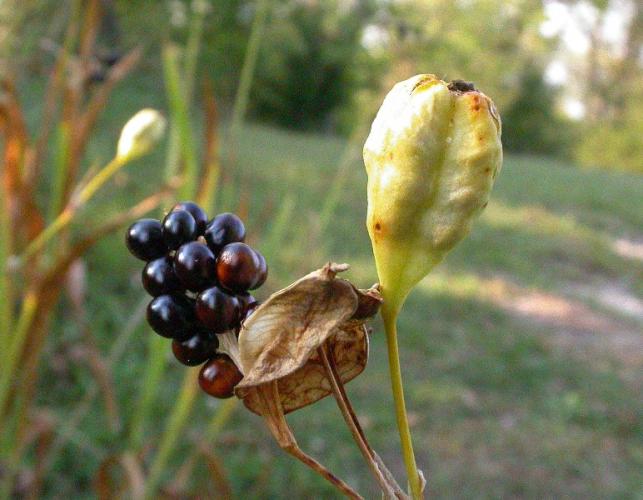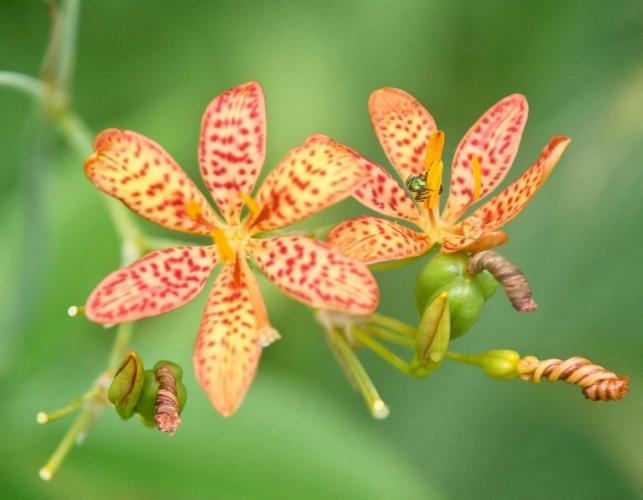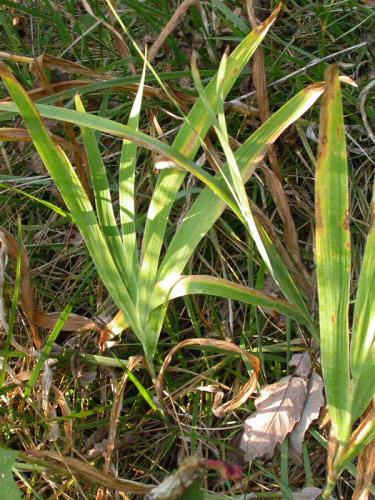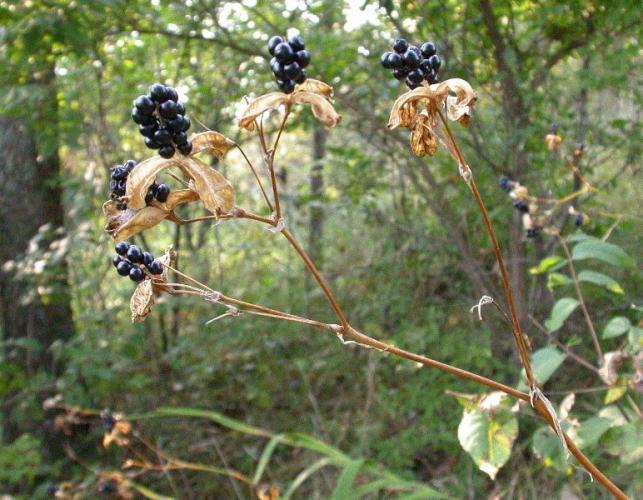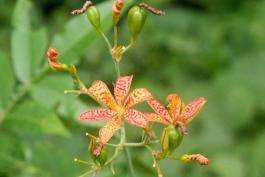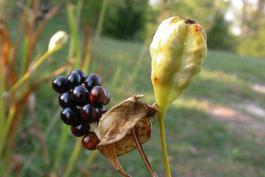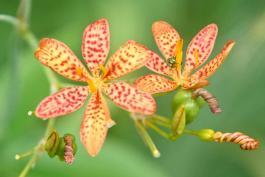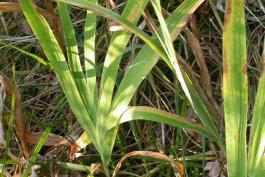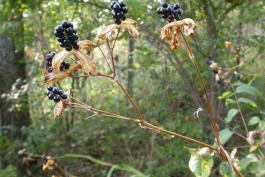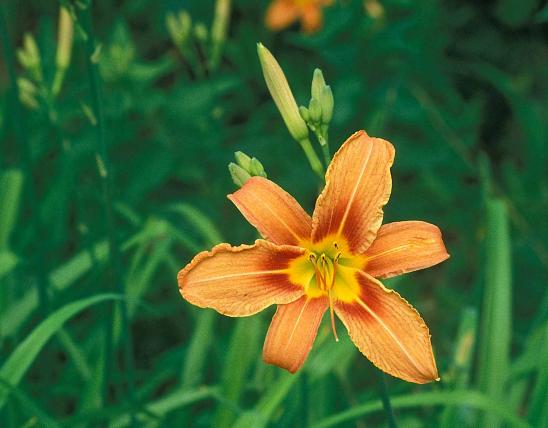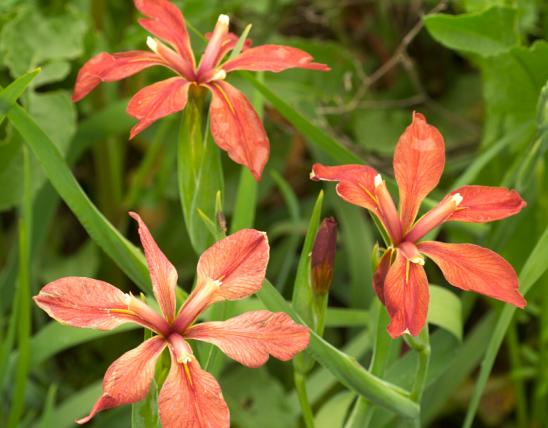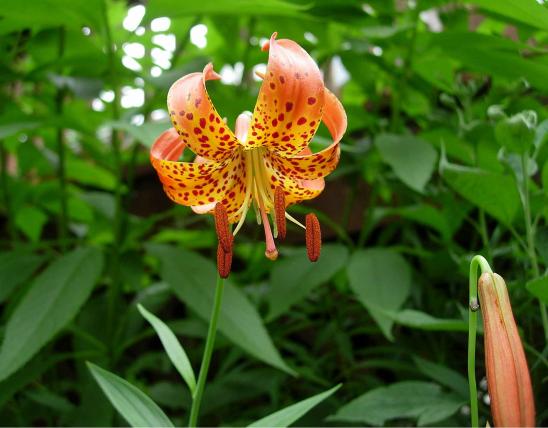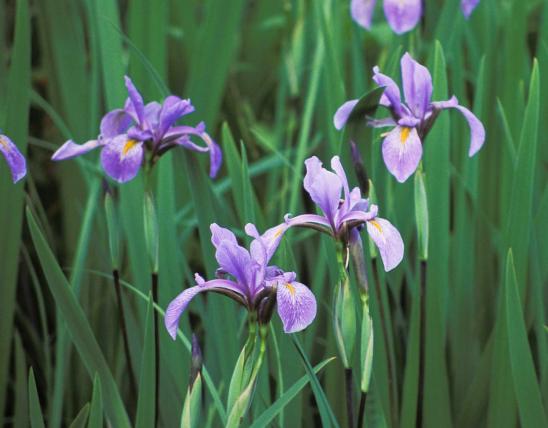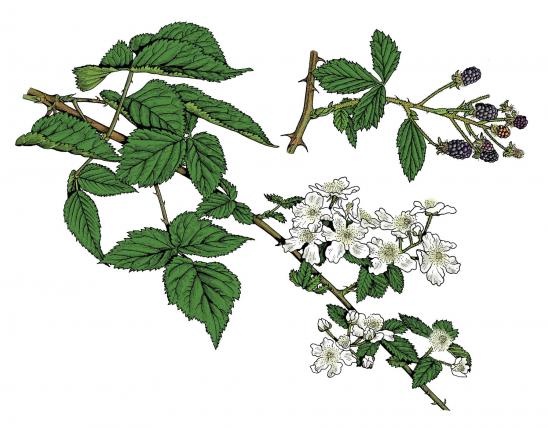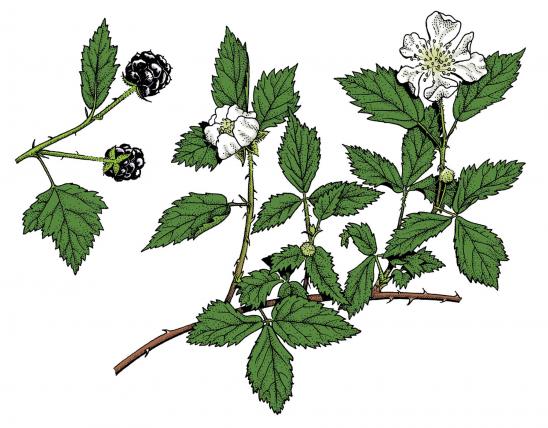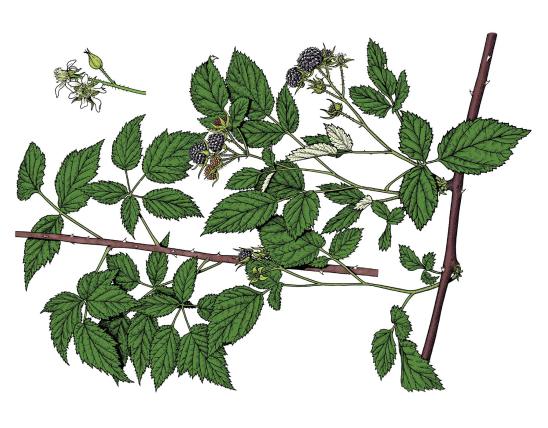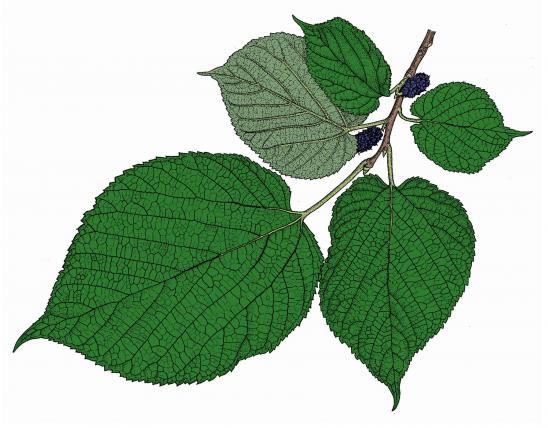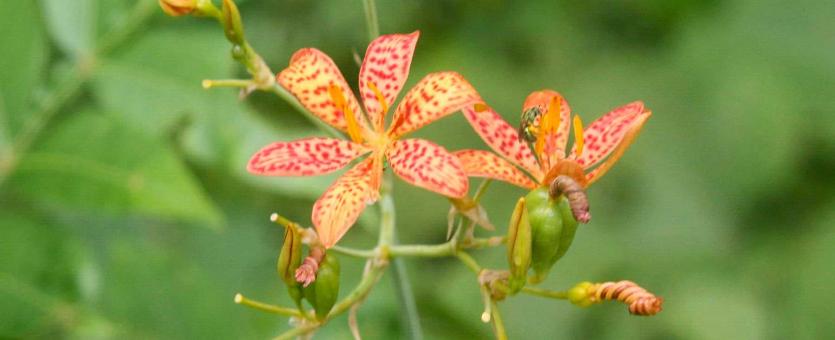
Perennial with bladelike leaves growing from yellowish-orange rhizomes. Flowers in terminal cymes at ends of branches, 1½ to 2½ inches across. Sepals and petals (together called tepals) similar, spreading, orange, with crimson or brownish spots. Each flower remains open for only a single day. There are 3 stamens. Blooms July–August. Leaves in flattened fans, nearly identical to those of the German garden iris, long and broad. Fruit a pear-shaped capsule about an inch long, that splits open and withers, revealing shiny black seeds, looking very much like a blackberry. The seeds remain attached for many weeks.
Similar species: At a glance, blooming blackberry lilies may be confused with day lilies (Hemerocallis), which have also escaped from cultivation. Day lilies more often occur in dense colonies in grassy areas, and less in dry, rocky areas, and although their leaves are creased somewhat, they are not folded into flattened, swordlike fans like those of this and other irises.
Height: aerial stems usually to about 3 feet, sometimes to 4 feet; leaf blades to 15 inches.
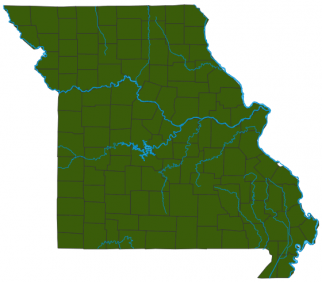
Scattered nearly statewide.
Habitat and Conservation
Occurs along roadsides, old homesites, edges of dolomite glades and bluffs, disturbed, dry, brushy areas, and rocky, open woods. Introduced; native to central and eastern Asia, but naturalized widely in the eastern United States.
Status
Nonnative wildflower. Introduced as an ornamental; can persist where it was planted and form small populations.
Botanists, using the relatively new technique of molecular DNA sequencing, in 2005 determined that this plant should be placed into the genus Iris. It had long been the sole member of the genus Belamcanda. Its attractive orange flowers, with petals and sepals that look quite similar, do not resemble those of familiar garden irises. But as with paternity testing in humans, DNA evidence in blackberry lilies has proven a relationship not obvious to the naked eye.
Human Connections
Blackberry lily is a favorite low-maintenance ornamental in Ozark yards where it has plenty of sun, little competition, and moist soils with excellent drainage. It self-seeds readily. The interesting seed heads can be used in dried flower arrangements. Several cultivars are available.
Ecosystem Connections
Many exotic plants have been introduced to our country, and many of those have become naturalized (that is, they escape from cultivation and live and reproduce on their own). Some of those that become naturalized are also invasive, but this does not seem to be one of them.
